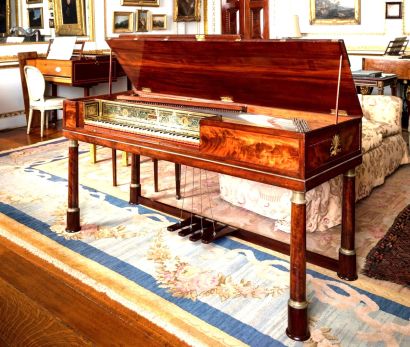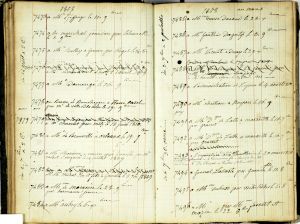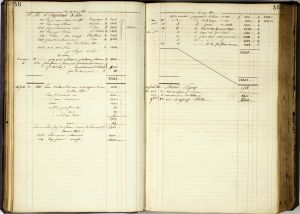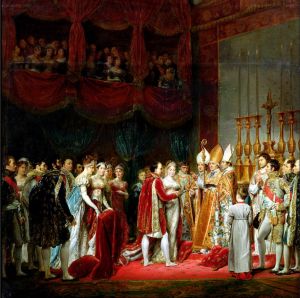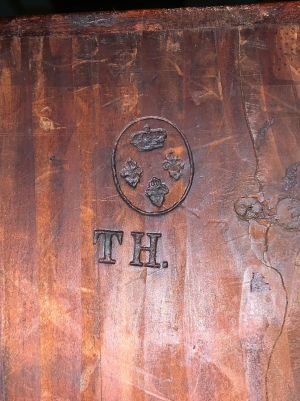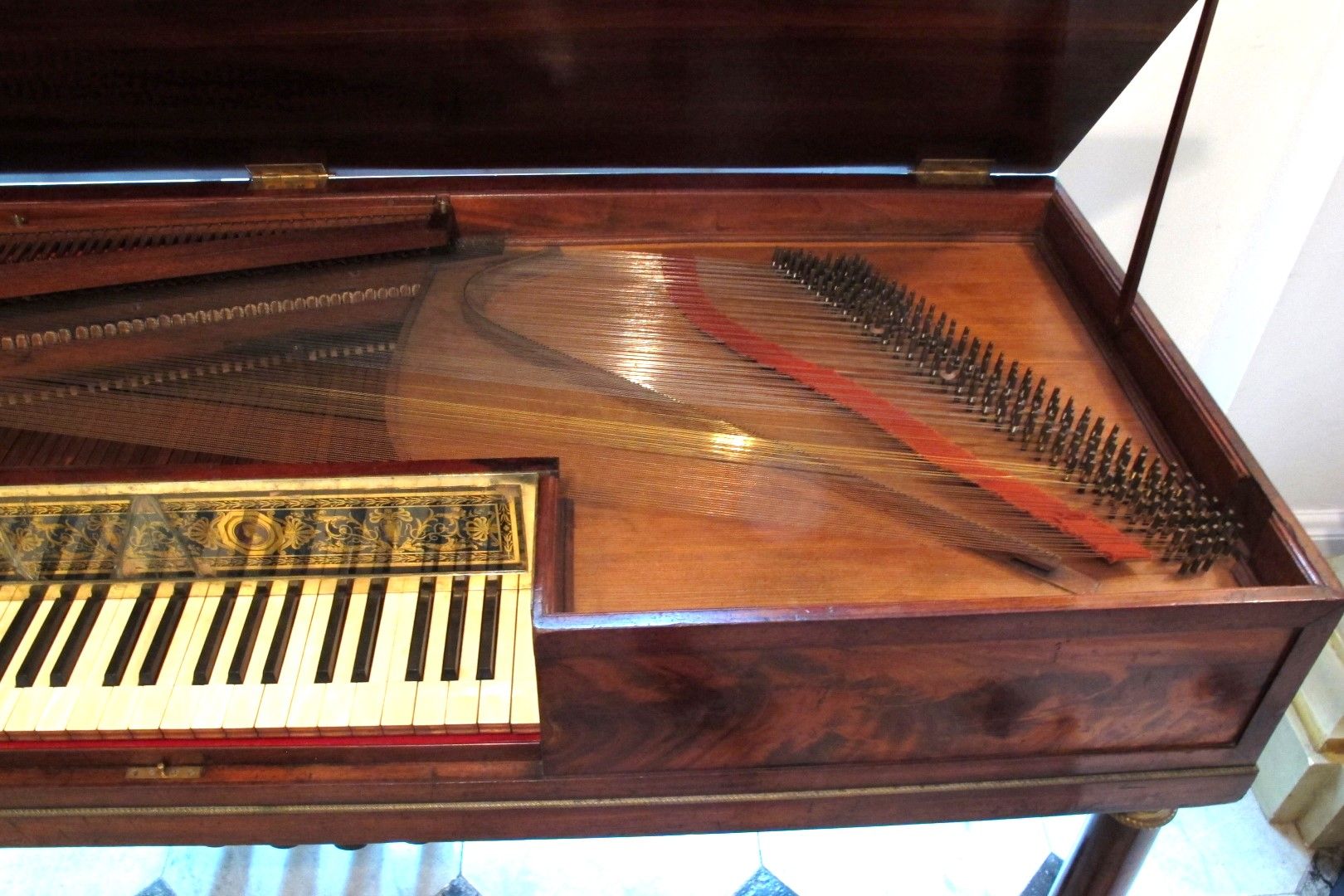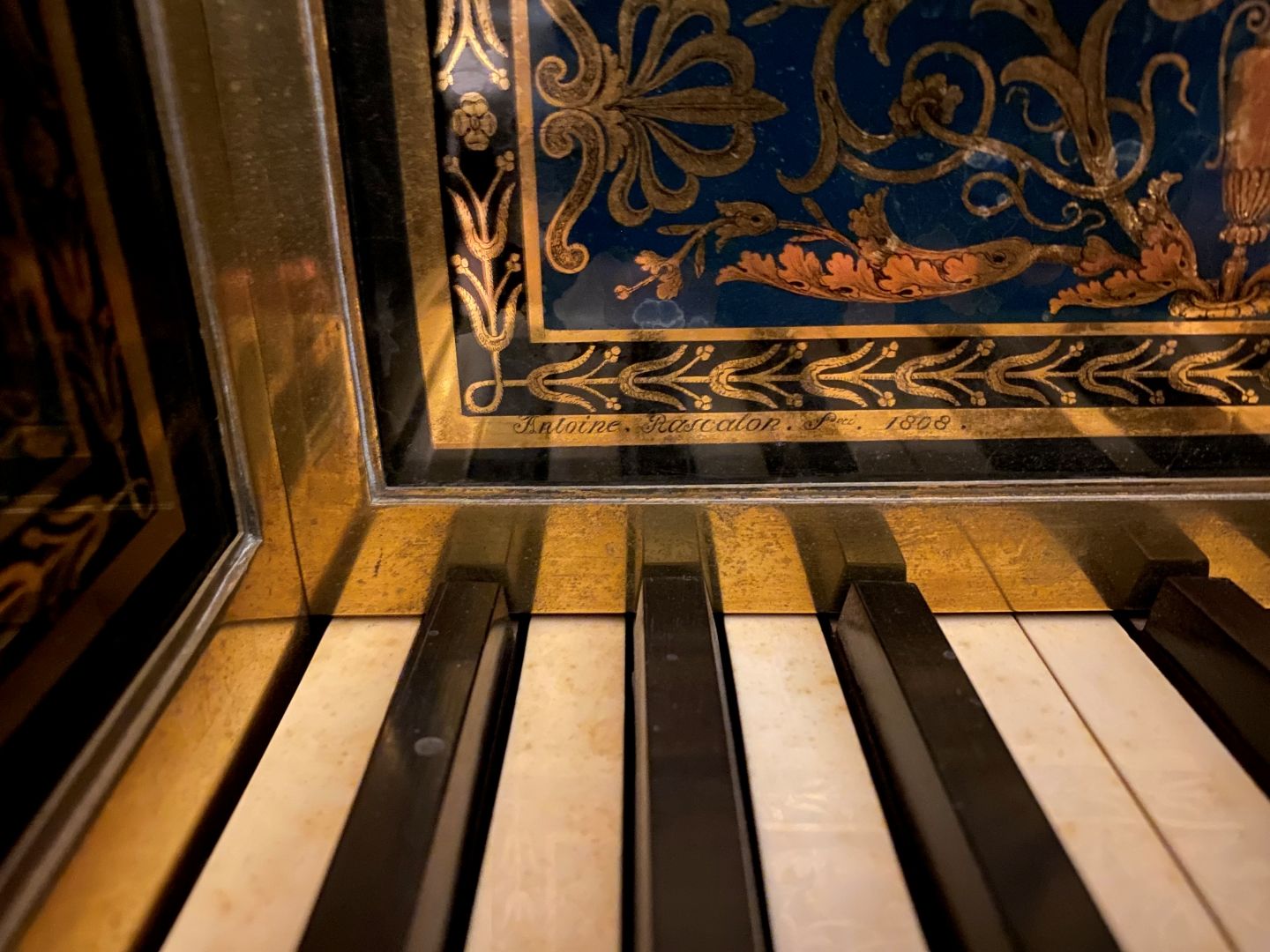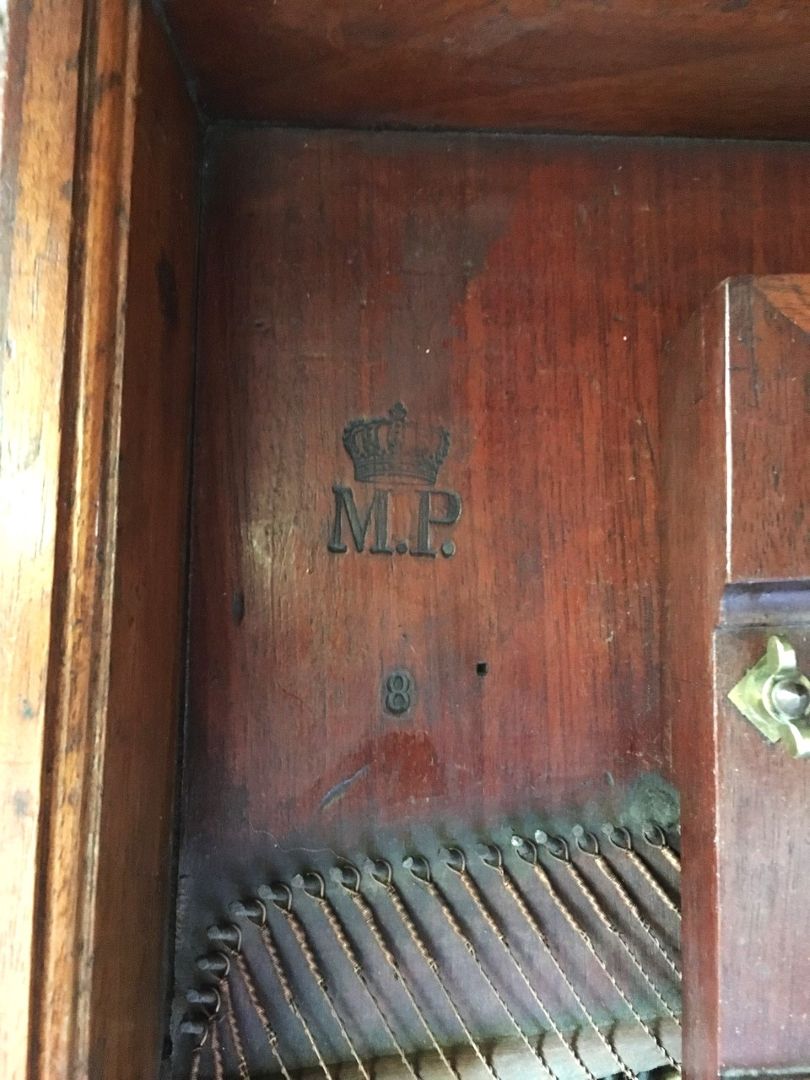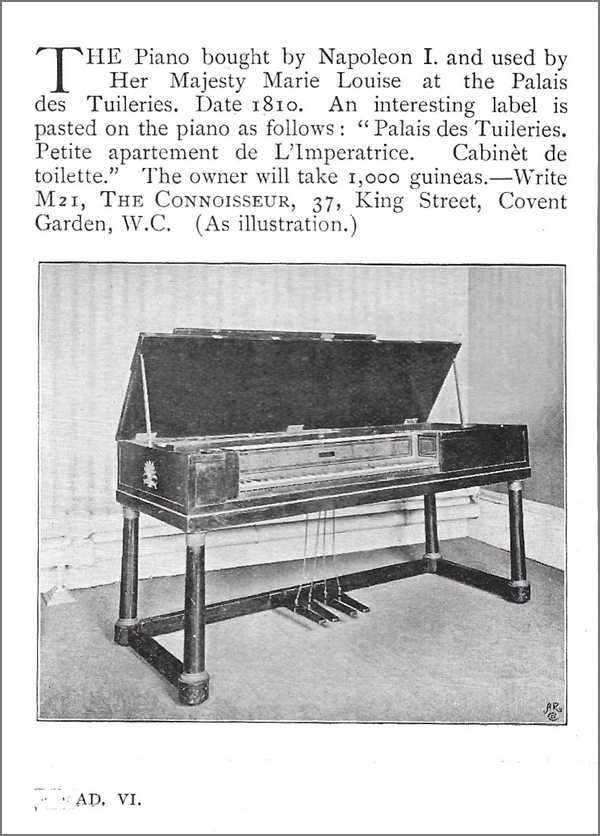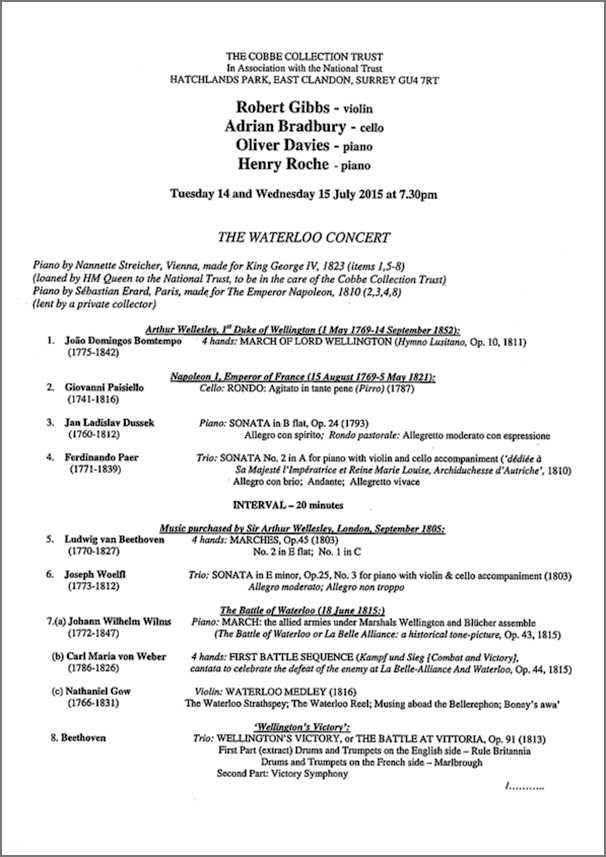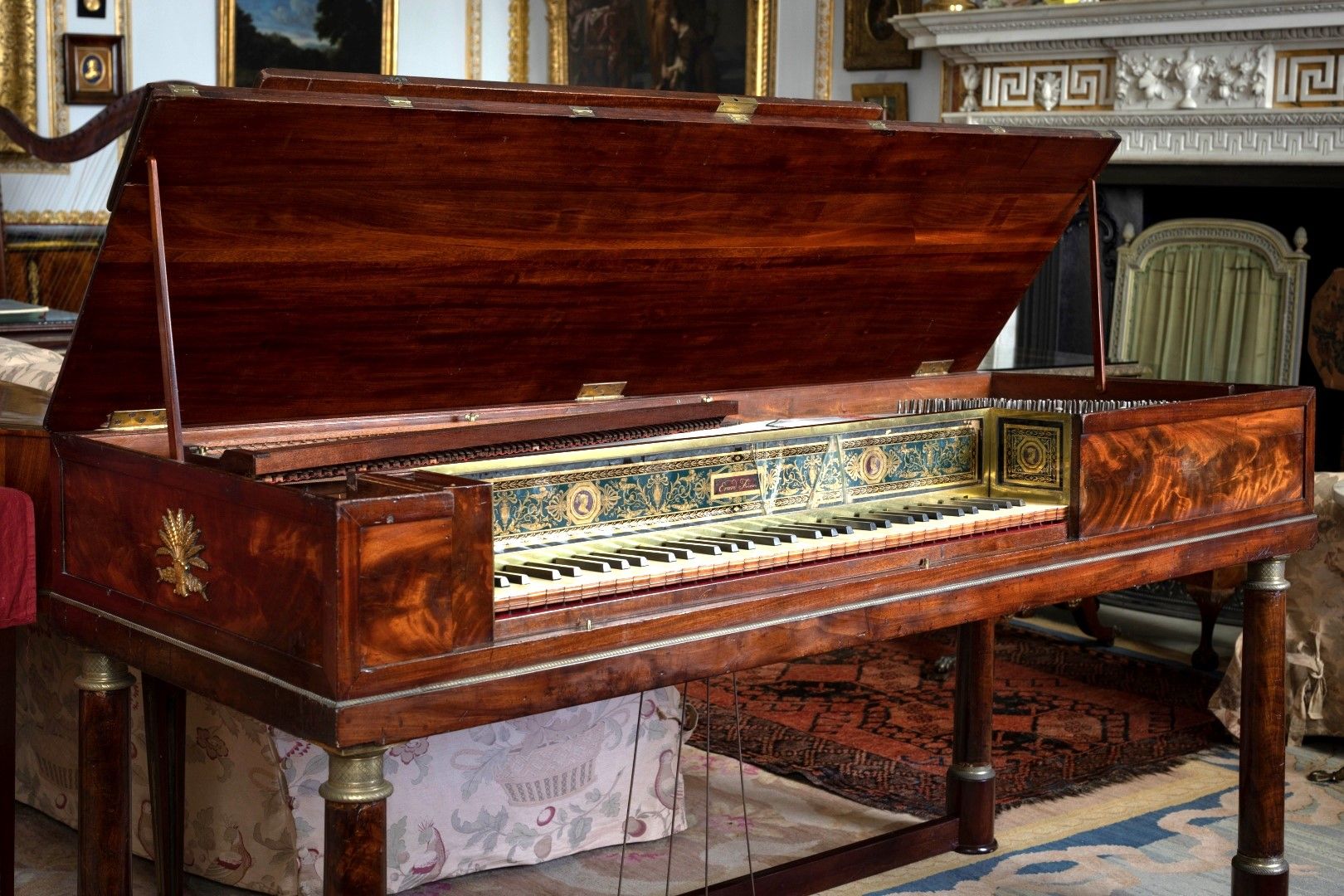Exhibition
Featured Links
Napoleon’s Piano
November 2023
Erard no. 7493 – a gift from Napoleon I to Marie Louise
Having languished for years on a corner shelf of J. G. Morley’s of South Kensington, an instrument the shop simply called an ‘Erard square piano’ was bought by pianist Oliver Davies, Parry Room Librarian at the Royal College of Music, in 1964. His young scholarly eye had spotted stamps on the baseboard indicating that the piano was a ‘sleeper’, and by the time he founded the Museum of Music History this Erard – which cost him £15 – had long proved to be one of his most inspired acquisitions.
Register Book, Erard; Collections Musée de la musique, Paris
A gift from Napoleon Bonaparte to his second wife Marie Louise on the occasion of their marriage in 1810, the piano (no.7493) was completed by the Paris factory of Erard Frères on 9 October 1808. Described at the time in the Erard register merely as triple-strung and orné, a more detailed listing was added later in its life: square model, small format, five and a half octaves [FF to c4], mahogany and decorated with bronzes. The Erard book of sales went further, calling the piano très richement orné, an oblique reference to perhaps the piano’s most beguiling feature: verre églomisé decorating the entire nameboard, the work of Antoine Rascalon (1742 – 1830). The same book reveals that it was one of an ensemble of fine new instruments – square pianos, harps and a grand piano – heading to various royal palaces on 20 March 1810 in good time for the arrival of the musical young bride.
Book of Sales, Erard; Collections Musée de la musique, Paris
This particular piano’s destination was the Empress’s apartments in the Tuileries Palace, the official residence of Napoleon in Paris. Joséphine Bonaparte, wife of Napoleon since 1804 and, like Marie Louise, an accomplished pianist, had left the same apartments for the last time on 16 December 1809. Unable to bear him an heir she had agreed to their divorce and gave her blessing for his marriage to Marie Louise. The apartments were completely redecorated in the three months before the new Empress’s arrival, in Neoclassical style by Pierre-Paul Prud’hon, and it was into a dedicated concert-room in this fresh splendour that the piano was delivered. Her rooms, which were on the ground floor looking out onto the garden, consisted of a gala apartment (comprising an antechamber, a first and second drawing-room, a drawing-room of the Empress, a dining-room, and the concert-room) and a private apartment (a bedchamber, the library, the dressing-room, the boudoir, and the bathroom). According to her biographer Arthur-Léon Imbert de Saint-Amand “A rigid etiquette controlled the entrance to the Empress’s as well as the Emperor’s apartment. Napoleon lived on the first floor, where he had the bedroom previously occupied by Louis XV and by Louis XVI; but there was a little private staircase, which he used constantly, leading to his wife’s apartment.”
Marriage of Napoleon 1 and Marie Louise, 1810, by Georges Rouget
Marie Louise was just 18 years old to Napoleon’s 41 at their wedding, the religious ceremony of which was on 2 April 1810. Growing up in Vienna as Archduchess of Austria she was, according to her biographer, an ‘eager student’ and developed ‘a good knowledge of French, English, Italian, drawing and music’. At a Viennese banquet on 6 March 1810 to celebrate the forthcoming marriage Marie Louise, according to a despatch from Napoleon’s ambassador Count Otto, was full of questions revealing her artistic curiosity: “Does the Emperor like music?” “Shall I be able to have a teacher on the harp? It is an instrument I am very fond of.” and “I hope the Emperor will be considerate; I don’t know how to dance quadrilles; but if he desires it, I will take dancing-lessons.” The instruments arrived at the palaces two weeks later, and she went on to receive music lessons from Napoleon’s maître de chapelle Ferdinando Paer, displaying ‘a real talent for the piano’.
TH (Tuileries) stamp on baseboard; surmounted by crown and fleur-de-lis added during the reign of Louis XVIII, Charles X or Louis-Phillipe
Oliver Davies wrote of Napoleon Bonaparte: “ [His] origins were anything but artistic and much has been made of the fact that he was unable to play an instrument or sing in tune. Born, however, as the Duchess of Abrantés later put it, ‘with the germ of an extreme sensibility’ he was to become an ardent music lover and connoisseur, as well as a patron of some historical significance. As First Consul and emperor Napoleon commissioned work, took active control of the Paris Opéra, opened the Théâtre Lyrique and three court theatres and set up copyright and pension arrangements for musicians (he also founded conservatoires in Bologna, Milan and Bergamo). Napoleon’s great love was Italian vocal music. He broadened French taste with repertoire and artists and in particular by bringing the composers Paisiello, Fontini and Paer to Paris.” His biographer Frédéric Masson wrote: “Among all the arts music is the only one for which he shows a special and personal liking. As to the others, he patronizes them from motives of policy, because of his passion for the grandiose, and the thought of immortality; but music he really and fully enjoys, is fond of it for its own sake, and because of the sensations it gives him. It calms his nerves, it cradles his reveries, it charms his melancholy moments, it fires his heart. What matter if he does sing out of tune, if he have a poor memory for a melody, and if he does not know his notes! Music moves him to the point of robbing him of his self-control, it drives him to offer the order of the iron crown of Lombardy to the soprano Crescentini; and this shows that he feels it more deeply than many of those who believe themselves capable of reading it.”
1. Detail of the piano’s interior, photo by Elizabeth Wells 2. Signature “Antoine Rascalon feci 1808’ on the verre églomisé, photo by Alec Cobbe
According to research by Oliver Davies one of the many concerts held in the concert-room in her Tuileries apartments was recounted by its piano-tuner in a German periodical some 30 years later. Taking place in early 1812 the programme included two renowned composers performing on this Erard: Czech-born Jan Ladislav Dussek (1760-1812) and Italian-born Ferdinando Paer (1771-1839). Dussek, a virtuoso pianist who had worked for Marie Antoinette in the same building some 25 years earlier, played one of his most popular works, Piano Sonata in B flat, Op. 24; he died in March the same year, so it is possible that this was the last piano he played in public. Paer, who appeared as piano accompanist only in this concert, was dedicated to nurturing Marie Louise’s musical development: as well as performing in these concerts and giving her music lessons he had written three piano sonatas ‘dediée à Sa Majesté l’Impératrice et Reine Marie Louise, Archiduchesse d’Autriche’ in 1810, together with a Bridal March which was premiered, alongside a new Cantata by Hummel, at her wedding.
On 25 January 1814 Napoleon saw his wife and their 2-year-old son for the last time; he left Paris to fight, in vain, the Allied invasion, and Marie Louise reluctantly left too, for Vienna, on 29 March, eventually settling in Parma two years later as their reigning Duchess. She remained married to Napoleon until he died in 1821 but refused to join him in his exile in Elba and then lost contact with him in his exile on St Helena. She married twice more and had three further children before dying in Parma on 17 December 1847, aged 56.
M.P. stamp probably denoting Menus-Plaisirs du Roi
Many of her possessions from the Tuileries were shipped over to Parma, but apparently not the Erard no. 7493; an ‘M.P.’ stamp probably denotes “Menus-Plaisirs du Roi”, a French institution in charge of the King’s ceremonies and festivities that closed at the French Revolution but which was re-established during the Bourbon Restoration (1814 – 1830). A number of pieces of furniture were attached to this institution, and this piano may have been one of them after the fall of the Empire. Another sign that the piano remained in Paris is the stamp of fleur-de-lis above the TH (Tuileries, or ‘Thuileries’) stamp – this royal insignium would also have been added during the Restoration. There is no known record of when it left the Tuileries, itself set alight by the Paris Commune in 1871 and subsequently demolished. But by 1899 documentary evidence of its whereabouts reappears: an addendum to the original Erard register listing records that on 13 March 1899 ‘M. Demouveaux fils’ (presumably Eugène Demouveaux fils, a craftsman at the Erard factory who was himself to become a silver medal winner at the Exposition universelle de Paris 1900) bought the piano back into Erard ownership, and that on the very same day it was shipped to S. & P. Erard in London (18 Gt Marlborough St).
Advertisement from The Connoisseur; A Magazine for Collectors, Vol. 1 No. 1, September 1901.
Two years later an advertisement appeared in Volume 1, No. 1 of a British magazine ‘The Connoisseur’, offering the piano for sale at 1,000 guineas. The photograph in the advert, presumably taken in the London Erard showroom, is by Adolphe Boucher of Bedford Lemere & Co. and can be viewed in its original form here.
Programme of a concert commemorating the Battle of Waterloo, Hatchlands Park, 15 July 2015.
Though Erard’s London showroom was still in operation at the turn of the century, its London workshops had closed in 1890 and the whole business gradually wound down over the next few decades, with J. G. Morley’s taking on much of the stock, including no. 7493. It was during this period, at some point between the date of the Bedford Lemere photograph and the moment of Oliver’s purchase (December 1964), that the piano sadly suffered neglect, ending up in very poor condition including damage to its verre églomisé.
Erard no. 7493, on long-term loan to Cobbe Collection at Hatchlands Park. Photo by Alexey Moskvin
Under Oliver’s care the piano was restored to playing order in the early 1980’s by Alastair Laurence, and by 1986 was at last able to be heard in public, in a concert at Fox Hall, Charlton. More performances ensued, most memorably (and following further restoration by Jeffrey Clamp, funded by the Cobbe Collection Trust) in 2015 when Oliver programmed a concert at Hatchlands Park to commemorate the Battle of Waterloo, the Erard and he taking centre stage in music by Paisiello, Dussek and Paer. It has remained there since, on long-term loan to the Cobbe Collection of historic keyboard instruments, standing in the same drawing room as the Erard square piano of 1787 belonging to Marie Antoinette, Marie Louise’s great aunt.
In October 2022 MOMH and Hatchlands Park welcomed composer Martin Phipps and pianist Andrew Skeet to use it for some of the soundtrack to the Ridley Scott feature film ‘Napoleon’, due for release on 21 November 2023, so promising Erard no.7493 its largest audience to date.
Adrian Bradbury
We are indebted to Thierry Maniguet (Musée de la musique, Paris) whose research and scholarship provided this article with its narrative and detail, and to Elisabeth Wiss-Sicard (Musée de la musique, Paris), Alec Cobbe (Cobbe Collection Trust), Elizabeth Wells (formerly Museum Curator, Royal College of Music), Alastair Laurence (John Broadwood & Sons), Jeffrey Clamp (Jeffrey Clamp Pianos) and Christopher Nobbs (Royal Academy of Music)
